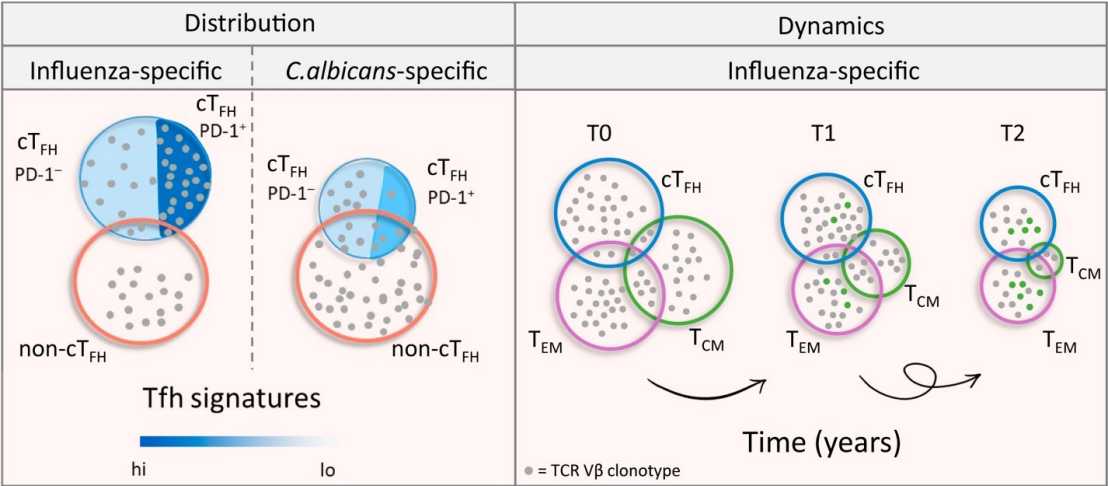Clonal composition and persistence of antigen-specific T follicular helper cells
The Sallusto group (ETH IMB and IRB Bellinzona) published a paper in the European Journal of Immunology providing insights on the relationship of human T follicular helper cells in blood (cTfh cells) with other circulating T helper subsets and on the heterogeneity and persistence of antigen-specific cTfh cells.

Follicular helper T cells (Tfh) play a critical role in protective immunity by helping B cells to produce antibody against foreign pathogens. Tfh are located in secondary lymphoid organs, including the tonsil, spleen and lymph nodes where they play an essential role in the formation of germinal centres (GCs). Additionally, Tfh are also present in the bloodstream and are called circulating Tfh (cTfh) cells. However, cTfh are poorly defined in terms of antigen specificity and persistence.
Researchers investigated the clonal composition of antigen-specific human cTfh cells with other functionally distinct T helper subsets. They reported that T cells specific for influenza virus, tetanus toxoid, or Candida albicans are present in both cTfh and non-cTfh subsets, although with different frequencies and effector functions. In particular, influenza-specific cells were found enriched in PD-1+ cTfh cells, had a unique TCR Vβ repertoire, and overexpressed specific genes associated to GC-Tfh. A longitudinal analysis of multi-year serial blood samples showed that influenza-specific cTfh induced by infection or vaccination persisted as a phenotypically stable repertoire for years.
The study contributes to the understanding of the clonal relationship of cTfh cells with other circulating memory T helper subsets and provides insight on the heterogeneity, origin and persistence of human cTfh cells specific for different antigens.
Link to the paper in external page European Journal of Immunology.